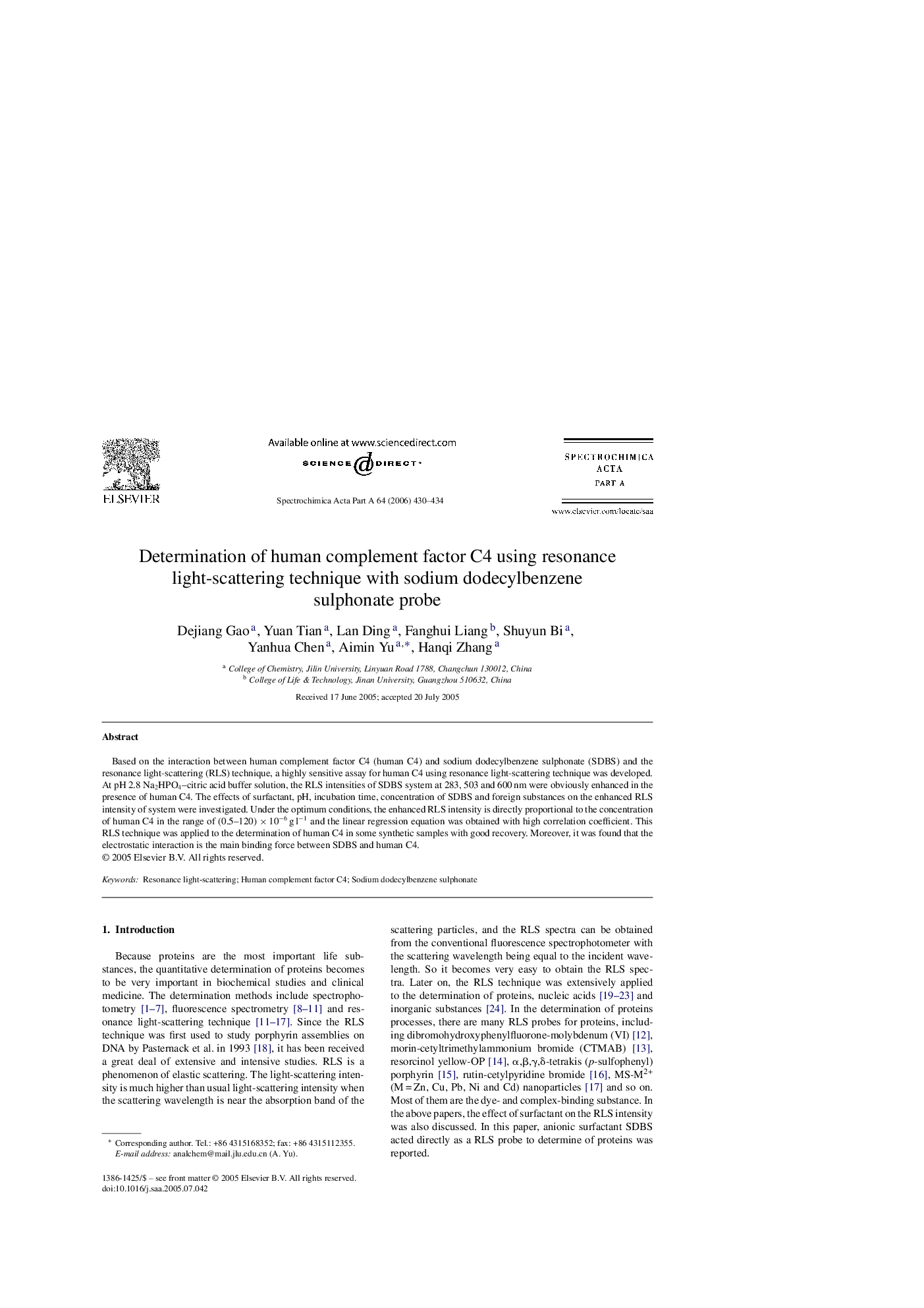| Article ID | Journal | Published Year | Pages | File Type |
|---|---|---|---|---|
| 1236584 | Spectrochimica Acta Part A: Molecular and Biomolecular Spectroscopy | 2006 | 5 Pages |
Based on the interaction between human complement factor C4 (human C4) and sodium dodecylbenzene sulphonate (SDBS) and the resonance light-scattering (RLS) technique, a highly sensitive assay for human C4 using resonance light-scattering technique was developed. At pH 2.8 Na2HPO4–citric acid buffer solution, the RLS intensities of SDBS system at 283, 503 and 600 nm were obviously enhanced in the presence of human C4. The effects of surfactant, pH, incubation time, concentration of SDBS and foreign substances on the enhanced RLS intensity of system were investigated. Under the optimum conditions, the enhanced RLS intensity is directly proportional to the concentration of human C4 in the range of (0.5–120) × 10−6 g l−1 and the linear regression equation was obtained with high correlation coefficient. This RLS technique was applied to the determination of human C4 in some synthetic samples with good recovery. Moreover, it was found that the electrostatic interaction is the main binding force between SDBS and human C4.
